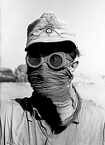Aurelian
Posts: 3916
Joined: 2/26/2007
Status: offline

|
quote:
ORIGINAL: vinnysix
In relation to historical context - Russia probably comes closest to the concept of Assualt Formations/Armies/Divisions....
During the Second World War, the Red Army of the Soviet Union deployed five shock armies (Russian: ударные армии – singular: Russian: ударная армия) between 1941 and 1945. Many of the units, which spearheaded the Soviet offensives on the Eastern Front from the Battle of Stalingrad (1942–1943) to the Battle of Berlin (1945), were shock armies. Shock armies had high proportions of infantry, engineers, and field artillery, but with less emphasis on operational mobility and sustainability. Soviet shock armies were characterized by a higher allocation of army-level artillery units to break German defense positions by weight of fire, and often had heavy tank regiments or heavy self-propelled gun regiments to add additional direct fire-support. Once a shock army had made a breach in an enemy tactical position, more mobile units such as tank and mechanized corps would insert themselves through the shock army's positions with the mission of penetrating deep into the enemy rear area. By the end of the war, though, Soviet guards armies typically enjoyed superior artillery support to that of the shock armies.
Shock armies were instrumental in the execution of deep operation (also known as Soviet deep battle – Russian: Глубокая операция, glubokaya operatsiya). The central composition of the deep operation was the shock army, each acting either in cooperation with each other or independently as part of a strategic front operation. Several shock armies would be subordinated to a strategic front.
Well-known shock armies include the 2nd Shock Army, which spearheaded several offensives in the Leningrad area, and the 3rd Shock Army, which played a key role in the Battle of Berlin.
A Soviet ad hoc combat group was a mixed-arms unit of about 80 men in assault groups of six to eight men, closely supported by field artillery. These tactical units were able to apply the tactics of house-to-house fighting that the Soviets had been forced to develop and refine at each Festungsstadt (fortress city) they had encountered from Stalingrad to Berlin.[7]
The Yugoslav Partisans also established "shock" units during World War II, commencing in February 1942. These initially formed as company- and battalion-sized units, and later grew into brigades.
In or amongst the German armed forces, large armies such as the Waffen-SS received training with the best gear and weapons, primarily used to hit weak points. The Waffen-SS also served as a heavy unit. Used to smash well-armed and -equipped armies on the Eastern Front, the Waffen-SS lost its efficacy after Kursk (1943), but nevertheless later fought in many theaters and played a role in the Battle of the Bulge (1944–1945).
I would point out that some german divisions were also designated Sturm divisions 78th I think.
After 1943 (particularly during and after the invasion of Italy), specialist British units, such as the Commandos and certain detachments of the Special Air Service were used as shock troops against well dug in or elite German forces. Again, both forces would be used in similar roles after the Allies crossed the Rhine, serving as a vanguard for British forces.
The modern British formation is 16 air assault brigade... So the concept is feasible and is meant to employ extra and possible elite formations to take on tough defenders in effect this requires extra training, buildup and supply with command focus given for operational purposes.
Just Saying....
Well, yes the Sovs did. But as the war went on the Shock Armies generally reverted to nothing more than a fancy titled ordinary army.
_____________________________
If the Earth was flat, cats would of knocked everything off of it long ago.
|
 Printable Version
Printable Version











 New Messages
New Messages No New Messages
No New Messages Hot Topic w/ New Messages
Hot Topic w/ New Messages Hot Topic w/o New Messages
Hot Topic w/o New Messages Locked w/ New Messages
Locked w/ New Messages Locked w/o New Messages
Locked w/o New Messages Post New Thread
Post New Thread